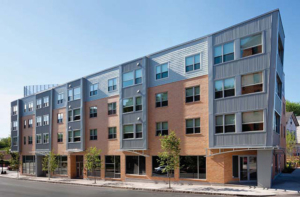According to data released in 2022, the U.S. currently faces a shortage of approximately 3.8 million homes. More recent projections suggest that number may now be even higher.
To address this extremely critical issue, Congress authorized an abundance of funding and an attractive tax incentive plan to address the problem. The federal government’s Housing and Urban Development (HUD) has increased its spending limits, expanded the Low-Income Housing Tax Credit (LIHTC) program and accepted an infusion of $50 billion in federal funding. While the objective is to increase the number of affordable homes, the government also hopes to stabilize prices at affordable rates for citizens.
Several states are introducing even more attractive initiatives by creating their own, state funded LIHTC programs. The hope is that, by supplementing the federal incentives, their attempts to attract private sector investors, developers, contractors and partners will be more successful. Most states are eager to begin resolving the housing problem.
In February, Indiana’s state housing authority disbursed low-income housing tax credits with a cumulative value of more than $180 million to 17 housing developments. The tax credits will be allotted to private sector firms over 10 years and will be provided to support the development of 776 affordable housing units.
The governor of Wisconsin announced recently that the state’s upcoming biennial budget will significantly expand the state’s LIHTC program by increasing its annual cap of $42 million in state incentives to $100 million. State initiatives are designed to supplement federal incentives and increase the attractiveness of construction projects. The state will begin announcing the first cycle of allocations to projects in May of this year.
Missouri’s housing authority has made $40 million in state tax credits available for affordable housing projects. The state’s LIHTC program will offer up to a 70% match of credits issued by the program’s federal counterpart. This effort should enhance the interest of potential private sector partners that are needed to help resolve the housing shortage. This is an extremely high priority for the state.
State leaders in Illinois recently introduced legislation to create a state LIHTC program with a $35 million cap. The state financing plan will also supplement federal investments. Together the incentives are designed to make affordable housing developments in Illinois more attractive to private sector partners. Because developers will be in high demand, states are attempting to find competitive advantages that will draw immediate interest to their initiatives.
A project to reimagine La Salle Street in Chicago is scaled for a budget of roughly $193 million and will be financed through the LIHTC program. The city plans to create hundreds of new affordable housing units to help revitalize the La Salle district. Six possible projects have been proposed and their financing strategies are being presented to public officials this month. Decisions will be made to select up to three of the six projects for advancement at the end of the month. One of the proposals under consideration is scoped to deliver 247 residences—75% of which would be affordably priced—along with food and retail space.
The St. Louis Housing Authority hopes to use the LIHTC program to attract private sector partners for redevelopment of the oldest building in its portfolio of city-owned property. Officials plan to convert the facility into 358 new affordable housing units for families. The project is projected to cost approximately $100 million.
A $400 million project in Buffalo, N.Y., will be the largest redevelopment of a public housing facility in the city’s history. The project is designed to redevelop an existing public housing facility so that 700 new affordable housing units can be offered. LIHTC enrichments will be available to attract a private sector partner to join the local housing authority in a public-private partnership (P3) engagement. Local leaders hope to be able to select a development company for co-ownership of the redeveloped complex.
A $90 million redevelopment project in Lancaster, Pa., is currently in the planning stage. An affordable housing facility will be financed through the federal LIHTC program. A six-acre site will undergo several phases of redevelopment and a former hospital and parking lot will be redeveloped into 50 townhomes and 160 apartment units.
The state of Virginia has two projects in the planning stages. One $14 million project in Fairfax County is scoped to reconfigure an underused government parking lot into 279 new units of affordable housing. The site will also be developed to include a childcare center, community gathering space and access to nearby urban greenspaces. Another project in the city of Bristol, Va., with a planned budget of at least $15 million, is scoped to include preparing two city-owned lots for development and then constructing 39 new townhomes that will be available through an affordable housing program.
This type of activity is common throughout America. Affordable housing is a major concern and developers interested in this type of engagement with governmental entities are in very high demand.







